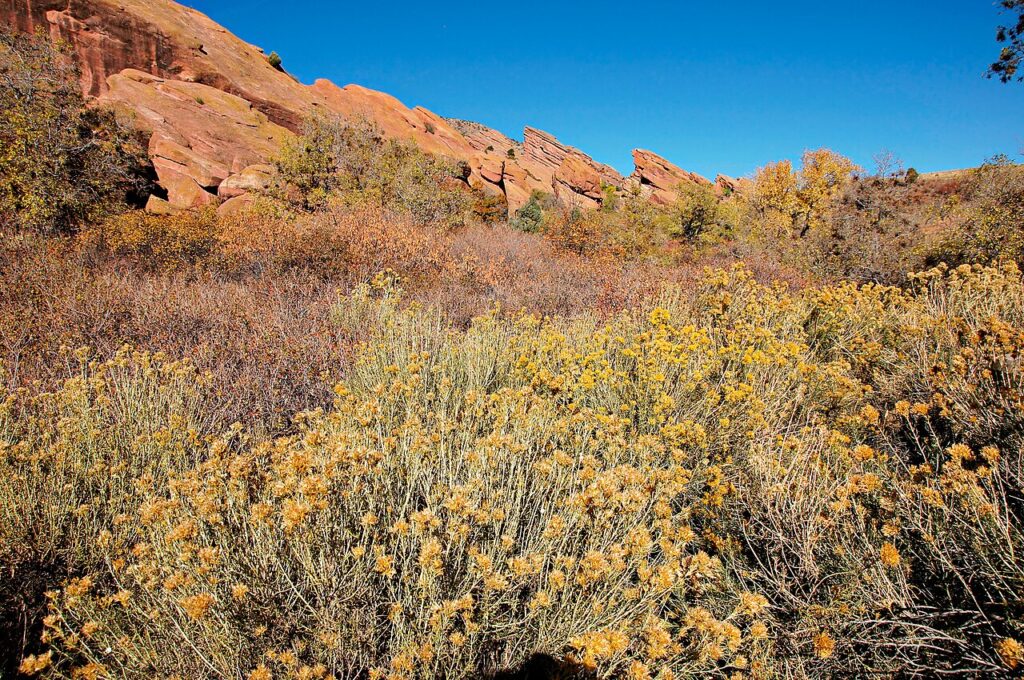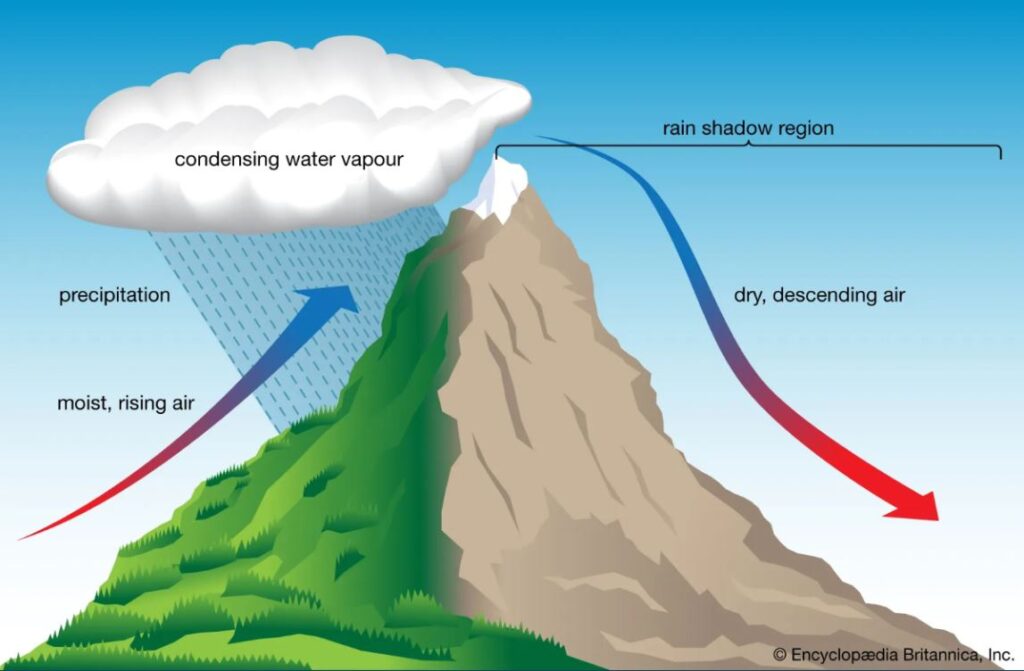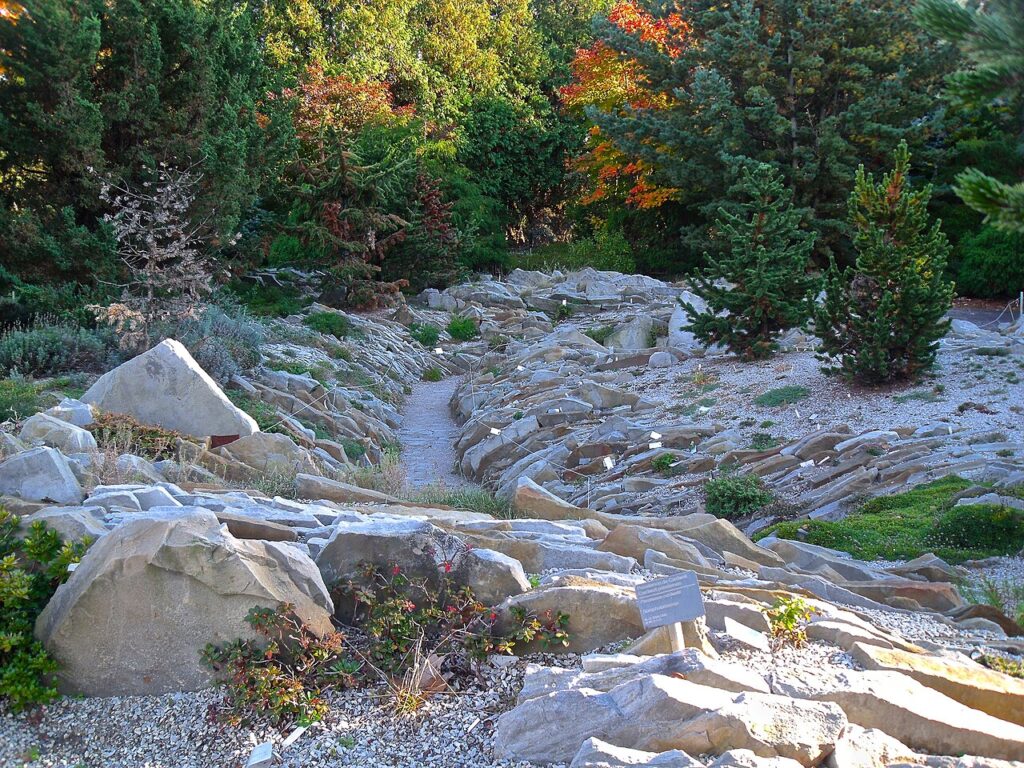I am traveling in Colorado this week, so my thoughts naturally turned towards the mountains. Mountains affect gardening in a number of ways, many of which include a weather or climate component. They also provide some special challenges for gardeners because of the harsh conditions and short growing seasons that are often found in and near mountainous terrain.

How the mountains affect weather and climate
It is said that mountains create their own weather, and there is a lot of truth to that. Mountains interact with the atmosphere in several ways, and that interaction can change both the atmosphere itself and the conditions on the surface of the mountain that is being affected by the air.
One way that mountains affect the atmosphere is by providing a physical barrier to the flow of air. Obviously, air can’t flow into a mountain slope, so it must either go up the slope, around the mountain crest, or through the valley between peaks. Air that is pushed up the mountain usually results in the formation of clouds on the upwind side, since rising air cools as it goes up and eventually the moisture in the air condenses to form cloud droplets, and eventually rain or snow, called “orographic precipitation”.

On the downwind side of the mountain, the air typically sinks and dries out, since the moisture has been wrung from the air by the rain or snow left on the upwind side. That can lead to a “rain shadow” effect with low precipitation amounts downwind of a single mountain or a range of mountains such as the Rockies. Flow over the mountains can also result in the development of lenticular clouds downwind as the air rises and sinks in waves produced as the wind moves over the peaks. You can see how rainfall affects climate across the United States at NOAA’s “The highs and lows of climate“.

If the air is diverted sideways around the mountain it can block the wind from hitting some locations downwind of the peak. Our fearless leader Linda told me she experienced this just a few weeks ago when a strong low-pressure center moved into the Northwest, bringing strong winds to the region. However, Linda noted that in her location, those winds were blocked by Mount Rainier, resulting in much lower local wind speeds due to the shelter from the massive mountain.
Wind flow up and down the mountains due to temperature variations
Mountains can heat or cool the air around them, depending on the time of day and the season. In summer, the peaks warm up and provide a heat source that helps lead to the formation of thunderstorms. You can see this almost every summer day in the western US with storms that develop over the mountains as the sun warms them. Those storms then move out over the prairies, leading to scattered rain or even virga, rain that evaporates before it falls to the ground. At night or in winter, the air near the peaks cools quickly and the denser air flows down the mountains into the valleys, resulting in katabatic winds that can cause freezes in low-lying areas when the coldest air reaches the lowest elevations. In this situation, the valley floors may experience frosts while areas on the slopes remain above freezing because the dense air drains through them relatively quickly. The winds can also increase evaporation rates, limiting the amount of available moisture and causing water stress on garden plants.

Temperature variation with elevation and orientation
The surrounding atmosphere also affects conditions on the mountain terrain. Atmospheric temperatures decrease with height, so as you go up in elevation on a mountain, the temperature will drop. This can lead to cooler climates and shorter growing seasons due to the increased likelihood of frost with the colder temperatures. This limits the types of plants that gardeners can grow because the climate of that location has limited suitability for plants that grow well on the flatlands.
Another aspect of mountainous terrain is the number of microclimates that are present in the rocky, uneven landscape. Mountaintops and sides offer a range of microclimates, from sunny, well-drained slopes to shady, cooler areas, influencing plant growth in different locations. North-facing slopes get little direct sunlight and can pool pockets of cold air that result in frosts every month of the year, while sunny south-facing slopes could be much warmer and more suitable for a variety of plants. Any mountain gardener has to be especially aware of the local microclimates in their area and account for them when choosing what and when to plant.

Of course, there are other characteristics of mountains that can also affect garden success. Soils are often shallow, rocky, and low in organic matter. Lower pressure and humidity may cause problems with plants’ ability to thrive in the harsher conditions. Sunlight can be very intense and shade from taller plants may be limited. Some areas may experience extensive periods of snow, which can provide insulation but can also damage plants when it slides downslope.
Gardening in the mountains can provide challenges for many gardeners due to the difficult environment that the mountain air provides, but it can also allow gardeners to create unique collections of alpine vegetation that can provide enjoyment for years to come, all set in a diverse and scenic landscape. Be sure to look for additional information on alpine or mountain gardening on the web to make sure your garden is well-suited to your local conditions.
